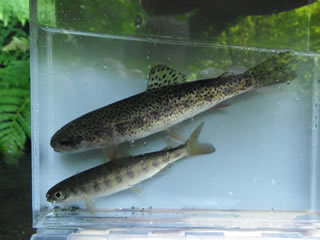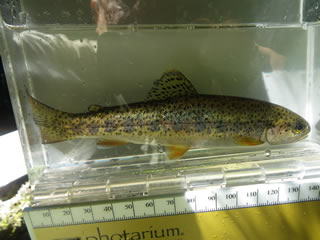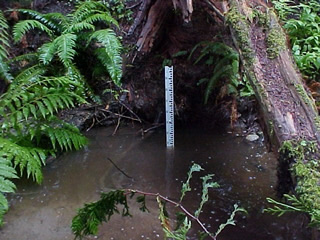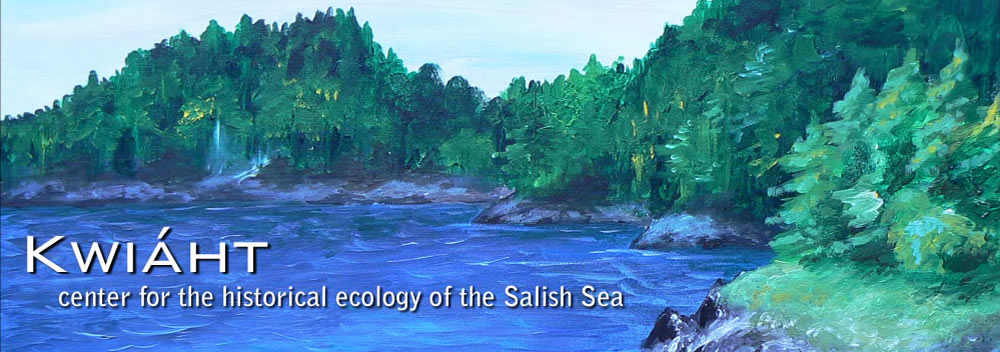Coastal Cutthroat Trout

Coastal Cutthroat adult and juvenile
The San Juan Islands are geologically young with thin soils and extensive rock outcrops, relatively low in relief, and lay in the rain shadow of the Olympic Mountains. This means that streams are small and rocky, and since there is no snow pack, summer flows depend on the slow seepage or leakage of stored winter rainfall from bogs, fens, natural lakes and artificial ponds. Most streams in the islands are highly seasonal (intermittent), with low to zero flows from early summer until heavy rains resume in autumn, and severe flooding in winter. Cascade Creek (outflow of Mountain Lake, Orcas Island) can vary from 0.2 cubic feet per second (0.2 cfs) to more than 20 cfs over a few months, and has attained flows of over 80 cfs.

Monitoring new Cascade Creek bridge
Nearly all of the islands' streams have been modified, moreover, by excavation of bogs, and construction of dams, dikes and diversions, most often to make artificial ponds with clay liners that increase evaporation and reduce summer stream flows. Climate change is also a concern. Winter storms are growing wetter and windier and summers drier. Higher precipitation rates reduce soil infiltration, increasing runoff, erosion and silt transport. In these circumstances, seasonal fluctuations in stream conditions increase, and in summer, streams flow less for longer.

Sea-run cutthroat in spawning colors, Cascade
Working in partnership with the Wild Fish Conservancy, we have nonetheless been able to document a number of freshwater fish populations in streams on Orcas and San Juan Islands, including at least two significant populations of Coastal Cutthroat Trout, and a number of very small, possibly transient occurrences of Coast Cutthroat, Rainbow Trout and Chum Salmon. Some of these fish represent recent introductions, while others may be naturalized from introductions by sportsmen a century ago, and at least one genetically distinct population may be a relic of early post-glacial colonization of the islands by trout from the mainland.

Monitoring a summer refuge pool
Field studies by Kwiáht and the Wild Fish Conservancy established that juvenile island Cutthroat can over-summer in shallow, isolated stream pools, migrating downstream in September or October as soon as stream flows increase sufficiently to restore glides. Our field studies also identified several streams with natural and artificial "one-way" barriers that permit juveniles to migrate downstream from headwaters habitats, but only return to the lowest, sea-accessible reach of the stream.
Kwiáht continues to work with riparian landowners to protect documented stream-pool habitat and collect more data on the life histories of the islands' Coastal Cutthroat Trout. Efforts are also underway to map the genotypes of island Cutthroat in cooperation with the Washington Department of Fish and Wildlife.
See Also: Wild Fish Conservancy water-typing on-line map
Research Paper: Final Streams Report
